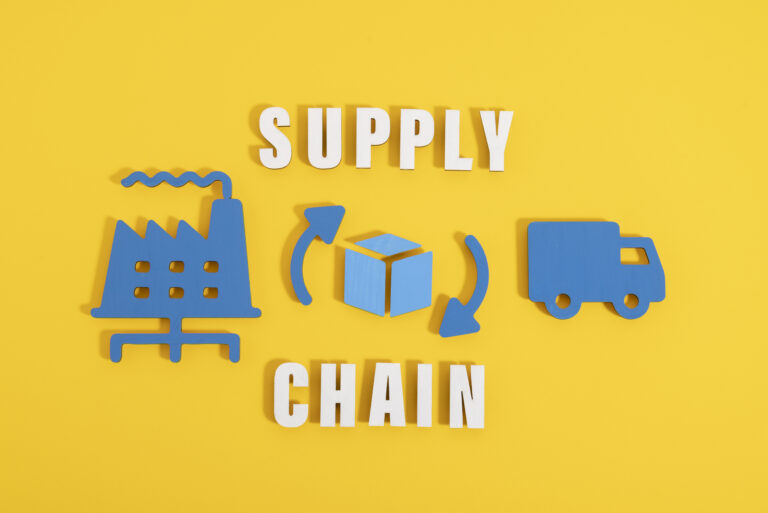Table of Contents
Supply chain efficiency is more crucial than ever in this competitive and rapidly evolving business world.
But what exactly does it mean to apply “lean” thinking to supply chain management? And how can working professionals begin to adopt these principles in practical ways?
Let’s break it down.
What Are Lean Principles in the Supply Chain?
Lean principles originate from the Toyota Production System and focus on maximising value for the customer while minimising waste.
In the context of supply chains, this means scrutinising every process from procurement to delivery to eliminate activities that do not add value, streamline operations, and foster a culture of continuous improvement.
The efficiency of a lean supply chain can be expressed mathematically as:
Lean Supply Chain Efficiency = Value-Added Activities / Total Supply Chain Costs
This formula measures how much of your supply chain’s total cost is dedicated to activities that genuinely add value. The higher the ratio, the more efficient and lean your supply chain is, meaning a greater proportion of resources are focused on processes that directly benefit the customer.
Lean supply chain management focuses on:
- Eliminating waste in every process, from procurement to delivery
- Continuous improvement (kaizen), encouraging teams to seek small, ongoing enhancements
- Just-in-time (JIT) delivery, ensuring products arrive when needed, not before
- Value stream mapping, to visualise and analyse each step for efficiency
- Customer-centricity, always prioritising what the end customer values most
Key Steps to Lean Supply Chain Optimisation
1. Map the Value Stream
Start by mapping out every process in your supply chain, from supplier to customer. This helps identify bottlenecks, redundancies, and non-value-adding steps. Involve cross-functional teams like procurement, logistics, production, and customer service to get a complete picture.
2. Identify and Eliminate Waste
Waste isn’t just about excess materials. It includes overproduction, waiting times, unnecessary transport, surplus inventory, and defects. By targeting these areas, you can significantly reduce costs and improve flow. For example, a manufacturer might switch to just-in-time inventory to cut storage costs and spoilage.
3. Establish Pull Systems
Instead of pushing products based on forecasts, a lean supply chain uses “pull” systems—production and replenishment triggered by actual customer demand. This reduces overproduction and ensures resources are used efficiently.
4. Foster Continuous Improvement
Lean is not a one-off project; it’s a culture. Encourage your team to regularly review processes, suggest improvements, and implement changes. Tools like kaizen events—short, focused improvement projects can make a big difference over time.
5. Collaborate with Suppliers
Rather than treating suppliers as distant vendors, lean thinking promotes collaboration, visibility, and shared goals. Work closely with suppliers to share forecasts, align with quality standards, and jointly solve problems. Strong supplier relationships can reduce lead times, improve reliability, and drive innovation throughout the chain.
6. Monitor and Measure Performance
Integrating technology into lean strategies makes the supply chain more transparent and adaptable. Use key performance indicators (KPIs) to track the impact of lean initiatives. Metrics might include inventory turnover, order cycle time, defect rates, and customer satisfaction. Regularly review these to ensure you’re moving in the right direction.
Related: 6 Effective Strategies to Modernise your Supply Chain
Real-World Benefits of Lean Supply Chains
- Cost Reduction: Companies adopting lean supply chain models report significant savings by reducing excess inventory and optimising logistics.
- Faster Response Times: Lean principles help businesses adapt quickly to market changes, especially in industries with short product life cycles, like electronics.
- Improved Quality: A focus on defect prevention and error-proofing leads to higher-quality products and fewer returns.
- Customer Satisfaction: By delivering what customers want, when they want it, lean supply chains build loyalty and trust.
- Sustainability: Cutting waste and improving efficiency support environmental goals and responsible business practices.
Read more: Sustainable business practices in the UAE: A growing green economy
Lean vs. Agile Supply Chains
Lean and agile supply chains represent two distinct approaches to managing and optimising supply chain operations, each with its own strengths and best-fit scenarios.
| Aspect | Lean Supply Chain | Agile Supply Chain |
| Focus | Efficiency, waste reduction | Flexibility, responsiveness |
| Inventory | Low (JIT, minimal stock) | Higher (to buffer uncertainty) |
| Best for | Stable, predictable demand | Volatile, unpredictable demand |
| Planning | Longer lead times, forecasting | Short lead times, real-time data |
| Cost vs. Service | Cost savings | Service level and speed |
Lean supply chains focus on maximising efficiency by eliminating waste, reducing costs, and streamlining processes. This approach relies on practices such as just-in-time (JIT) inventory, standardised workflows, and continuous improvement. Lean is particularly well-suited to environments with stable, predictable demand and longer product life cycles, where minimising excess inventory and maintaining cost control are paramount.
In contrast, agile supply chains prioritise flexibility and responsiveness. Agile methodologies are designed to quickly adapt to changing customer needs, market fluctuations, and supply chain disruptions. This approach often involves maintaining higher levels of inventory, working with multiple suppliers, and fostering strong cross-functional collaboration.
Agile supply chains excel in industries with volatile demand, short product life cycles, or frequent product customisation requirements.
Many organisations today adopt a hybrid approach, blending lean’s efficiency with agile’s adaptability to meet varied market demands and ensure both cost-effectiveness and customer satisfaction.
Become a Future Leader in Supply Chain Industry
Optimising your supply chain with lean principles doesn’t require massive overhauls. It starts with understanding where waste exists, involving the right people, and using data to drive smart decisions. Over time, these small shifts can create a big impact; improving efficiency, cutting costs, and making your organisation more resilient.
Whether you’re leading a team or looking to step into a higher role, mastering lean supply chain strategies can help you get there.
- If you’re keen to take your expertise to the next level, consider the following advanced programmes:
- MBA in Agile Supply Chain Management: A comprehensive, one-year online programme designed for professionals seeking to lead in dynamic supply chain environments.
- Master’s Degree in Supply Chain Management: Deepen your knowledge of global supply chain strategies and lean methodologies.
Both programmes are delivered 100% online, making them ideal for working professionals aiming to drive change in their organisations.
Explore the courses:
MBA in Agile Supply Chain Management from UCAM, Spain
MBA in Supply Chain Management from Istec Business School, France
Related: Is Dubai the Ideal place to pursue an MBA in Supply Chain Management









